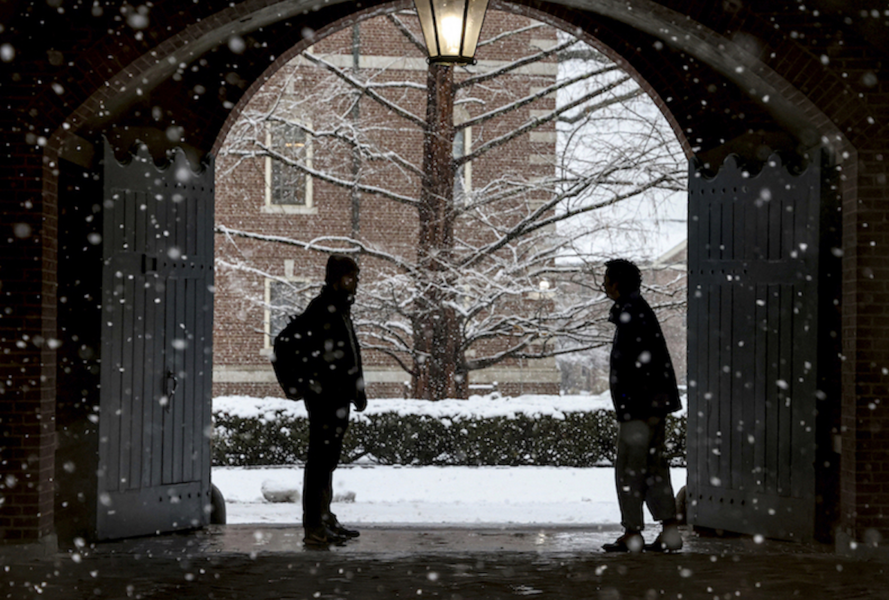Red, white, and feeling blue: Why young Americans are in a ‘mid-life crisis’
Loading...
| London
Rising unhappiness among younger people has caused the United States and some large western European countries to fall down a global well-being index, while Nordic nations retain their grip on the top spots.
The annual World Happiness Report, launched in 2012 to support the United Nations’ sustainable development goals, is based on data from U.S. market research company Gallup, analyzed by a global team now led by the University of Oxford.
People in 143 countries and territories are asked to evaluate their life on a scale from zero to 10, with 10 representing their best possible life. Results from the past three years are averaged to create a ranking.
Finland remained in the top spot – with an average score of 7.7 – followed closely by Denmark, Iceland, and Sweden, while Afghanistan and Lebanon held the bottom two spots, with scores of 1.7 and 2.7 respectively.
In broad terms, the rankings are loosely correlated with countries’ prosperity, but other factors such as life expectancy, social bonds, personal freedom, and corruption appear to influence individuals’ assessments, too.
The young and the restless
The United States dropped out of the top 20 for the first time, falling to 23rd place from 15th last year, due to a big drop in the sense of well-being of Americans aged under 30, the report shows.
While a global ranking of the happiness of those aged 60 and over would place the United States 10th, under 30s’ life evaluations alone put the U.S. in 62nd place.
The findings are at odds with much previous research into well-being, which found happiness highest in childhood and early teens, before falling to its lowest in middle age, then rising around retirement.
“Youth, especially in North America, are experiencing a mid-life crisis today,” said Jan-Emmanuel De Neve, a University of Oxford economics professor and one of the report’s editors.
Millennials and younger age groups in North America were significantly more likely than older age groups to report loneliness.
But Professor De Neve said a range of factors was likely to be lowering young peoples’ happiness, including increased polarization over social issues, negative aspects of social media, and economic inequality that made it harder for young people to afford their own homes than in the past.
While the phenomenon is starkest in the United States, the age gap in well-being is also wide in Canada and Japan, and to a decreasing extent in France, Germany, and Britain, which all lost ground in this year’s rankings.
By contrast, many of the countries with the biggest improvements in well-being are former communist countries in central and eastern Europe.
There, unlike in richer countries, young people report significantly better quality of life than older people, often on a par or better than in western Europe.
“Slovenia, Czechia, and Lithuania are moving into the top 20 and that’s wholly driven by their youth,” Mr. De Neve said.
The Golden State’s golden opportunity
California Assemblyman Anthony Rendon, a Democrat who was one of the longest-serving Assembly speakers in California history, is spending his last year in office trying to make happiness more central to policymaking, The Associated Press reported. He created a first-in-the-nation group to study the issue, called the Select Committee on Happiness and Public Policy Outcomes, which held its first public hearing last week.
It would be “silly” for lawmakers to not study how they can make people happier, Mr. Rendon told the AP.
“Because if we have everybody clothed, everybody housed, everybody has a job and they’re miserable, then we’ve failed at what we’re trying to do,” he said, adding that lawmakers should think about happiness as a priority in policymaking.
In California, three-quarters of adults say they are “very happy” or “pretty happy,” while 26% say they are “not too happy,” according to a September 2023 survey from the Public Policy Institute of California. Adults age 18 to 34, people who are renters, those without a post-high school degree, and Californians with an annual household income of $40,000 or lower tend to be less happy than others.
Lawmakers on California’s new committee heard this week from experts about the things that make people happy, what public officials can do to help, and what role state and local government can play, according to the AP. The committee isn’t set on any solutions yet but plans to release a report with its findings after lawmakers adjourn for the year at the end of August, said Katie Talbot, Mr. Rendon’s spokesperson.
Assemblymember Pilar Schiavo, a Democrat representing part of the San Fernando Valley in Los Angeles County, hopes the committee’s work can address poor mental health among youth in California, which her 11-year-old daughter has told her is a big issue in her class at school.
“It’s a true crisis that we have on our hands right now,” Ms. Schiavo told the AP. “This is really getting to the heart of what that crisis is about.”
This story was reported by Reuters. Material from The Associated Press was used in this report.







